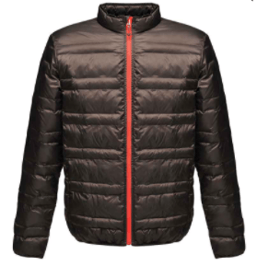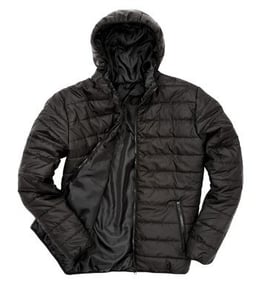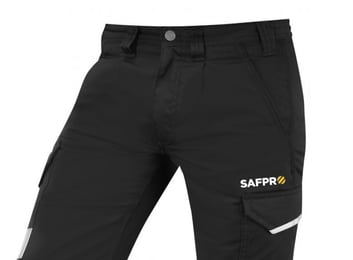
In order to stand out and gain a competitive advantage in your industry, you have to innovate and offer a unique product or service. Some companies want to take this a step further and really stand out from the crowd...
Branded uniforms are walking advertising, ensuring direct contact with your target customers. And whilst there are a wide range of innovative uniforms designs available, e.g., garments with reflective piping, two tone options, the industry is always evolving, and some clients want to differentiate themselves further and stand out from their competition with a unique corporate uniform.
"I don't want our staff looking the same as (example company), we want our engineers to look different and stand out in their working environment, we want a unique company uniform", stated Joe Bloggs.
No problem, Joe, you’re in luck, here is a list of "do's and don'ts" when you are designing and specifying your new range of uniform. We have listed some key learnings and some key pitfalls we have experienced working with customers. A unique uniform doesn't necessarily mean a bespoke design...
Which Garments should i select?
The garments you select are key to creating a unique image. There are a wide range of different garments available 'off the shelf' - puffer jackets, lightweight zipped fleece jackets and softshell bodywarmers - examples on the images below. These are great alternatives to traditional workwear items such as fleece jackets, and cumbersome winter coats. Also, consider layering up options - always choose these from the same range so that they coordinate well in terms of design and colourway.


what should i look out for when selecting non standard garments?
It is important that the products don't just 'look good', they must be suitable for your working environment; an experienced workwear provider will have knowledge and be able to advise on a range that is suitable for your working conditions. A wearer trial is recommended to ensure the garments are fit for purpose, along with wearer trial forms for you to complete, this will highlight the suitability of the proposed products compared to your current products.
You must assess current and long term supply chain availability, if the garments aren't mainstream items this can present supply challenges further down the line, manufacturer stocks may be minimal if the usage on certain products is low, and they may even be planning to discontinue your specified items.
What branding options are available?
Make your uniform unique via the branding of your garments, this can be done via embroidery, heat-seal transfers or woven tabs. Be creative around transfer design – there are times to be bold and make a statement and times to be subtle and minimalistic. Front left breast is the traditional and optimal position to brand your garments, but consider different positions such as the nape of neck or along the sleeve of your garments - this really makes a statement and shows you're serious about your brand.
When branding your workwear, perhaps a polo shirt or jacket, you can even go the extra mile and personalise that item – with the name of your employee, this demonstrates a two-way loyalty and bond between company and employee. However, the additional cost of personalising a garment with your employee's name can be prohibitive.
Examples of different branding positions


WHICH COLOURS SHOULD I USE?
Be familiar with the colour palettes in your brand guidelines and optimise their effects. Select the correct colourway for your uniform based on your company’s corporate colours. This could be one colour for your base garments and then another colour for outer products - a colour mix for different garment layers. Traditionally most organisations use a black or navy base garment colour, this is due to commercials, availability, and ease of supply.
You may want to avoid...
selecting one colour for all garments, this often results in a bland image. In contrast, ensure that you don't select too many colours within your uniform as this will result in your brand not clearly standing out. An industry norm is a maximum of 3 different colours.
Key things you should consider if specifying a bespoke design
A bespoke uniform design gives you an "only-you" look, it enables you to design a range of garments that are totally unique to your company and also cater for any specific requirements, e.g., a client request involved designing a combat trouser with a pocket large enough to hold a mobile tablet device, a bespoke requirement. It also enables you to exactly match the pantones specified in your brand guidelines.
However, a bespoke uniform design can be difficult to manage supply-wise. Disadvantages of bespoke involve the need of committing to large stock volumes and even underwriting the stock with your supplier. The minimum order quantities per product are high and it can become a challenge regarding ongoing availability of all sizes if you have a smaller workforce.
With bespoke, it requires a long-term commitment in terms of both stock and brand and carries with it a liability should the stock no longer be required. To carry out changes to a bespoke uniform range could be a 12-month process.
When you put on your workwear, you are accepting the role as an ambassador for your organisation, it gives you accountability as a visible company representative. We hope these simple tips will help you design and specify a range of workwear that your staff want to wear and help you stand out in your industry.







